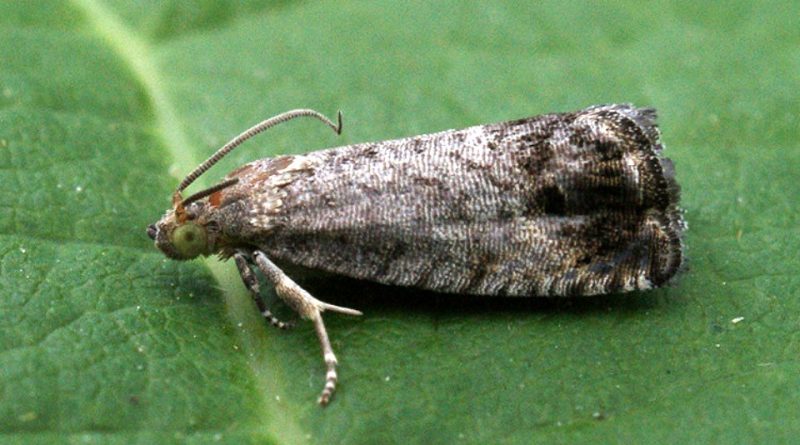Cydia splendana
Cydia splendana
The chestnut tortrix (Cydia splendana (Hübner, 1799)) is a moth belonging to the Tortricoidea family.
Systematic –
From a systematic point of view, it belongs to the Eukaryota Domain, Animalia Kingdom, Sub-Kingdom Eumetazoa, Superphylum Protostomia, Phylum Arthropoda, Subphylum Tracheata, Superclass Hexapoda, Insecta Class, Subclass Pterygota, Endopterygota Cohort, Order Oligoneoptera, Order Epidopidae, Order Epidopidae, Order Epidopidae, Heteroneura, Ditrysia Division, Tortricoidea Superfamily, Tortricidae Family, Olethreutinae Subfamily, Grapholitini Tribe and therefore the Cydia Genus and the C. splendana Species.
Geographical Distribution and Habitat –
The chestnut tortrix is an insect with a distribution on the European and Asian continent.
In Italy it is present throughout the territory and in particular in the area corresponding to the spread of chestnut, even if it lives on walnuts, oaks and beeches.
Morphology –
The Cydia splendana can be recognized in the adult stage for having the front wings of gray color, marbled with brown and light stripes; in the most distal part an ocellar spot can be distinguished which is partially delimited by a blackish band that widens on the rear side of the wing.
The wingspan oscillates between 15 and 18 mm with males slightly smaller than females.
The eggs are lenticular in shape, 0.6 mm in size, first white, then developing a reddish ring.
The larvae are 12-16mm long, have a whitish coloring and have a brown head.
Aptitude and biological cycle –
The chestnut tortrix spends the winter at the larva stage inside a brown cocoon placed in the ground.
The insect arrived in the period of June-July, incrisalida to flicker then in adult form from July until September.
Mating takes place a few days after flickering and the females normally lay on the leaves and “curls” of chestnuts or, more rarely on walnuts, oaks and beeches, a hundred eggs which, in certain cases, can reach up to 300.
The larvae that are born after about 7-15 days from the oviposition immediately penetrate the chestnuts making a hole at the base of the “hedgehog”.
In normal conditions there is the presence of a hedgehog larva but in conditions of high infestations you can find up to 2-3 that dig tunnels, even in deep tissues, which gradually fill with excrements.
The larvae spend about a month and a half inside the chestnuts where, upon reaching maturity, they pierce the nucula and emerge to bury themselves and build the wintering cocoon. It is however possible that the larvae find shelter in the ravines of the rind by wintering directly on the host plants.
This moth performs only one generation per year.
Ecological role –
Cydia splendana is a butterfly active at night that infests chestnuts, walnuts and acorns of oaks and beeches.
The damage is determined by the larval stage of the insect that feeds on the fruits and the nutritional tunnels excavated, always by the larvae that can cause the early fall of chestnuts.
In addition to the fruit drop, the damage is determined by the fact that these cannot be marketed. The damage can be very high and in some cases reach 50% of the production.
To safeguard the plants from the infestations of Cydia splendana it is important to carry out a monitoring, which allows to determine the presence of massive attacks, by means of traps on pheromones.
In addition, it is good to collect and destroy chestnuts that fell early, to prevent heavy infestations in the following year.
The adoption of chemical interventions is rarely justified, especially for the subsequent imbalances that these interventions cause. In past years phosphorganics were used in the case of heavy infestations.
Finally, before storing the chestnuts, disinfection in water at 45 ° C for about 50 minutes is recommended and, subsequently, before the conservation phase, it is advisable to dry the fruits thoroughly to avoid the onset of myopathies.
Guido Bissanti
Sources
– Wikipedia, the free encyclopedia.
– Russo G., 1976. Agricultural entomology. Special Part. Liguori Editore, Naples.
– Tremblay E., 1997. Applied entomology. Liguori Editore, Naples.

